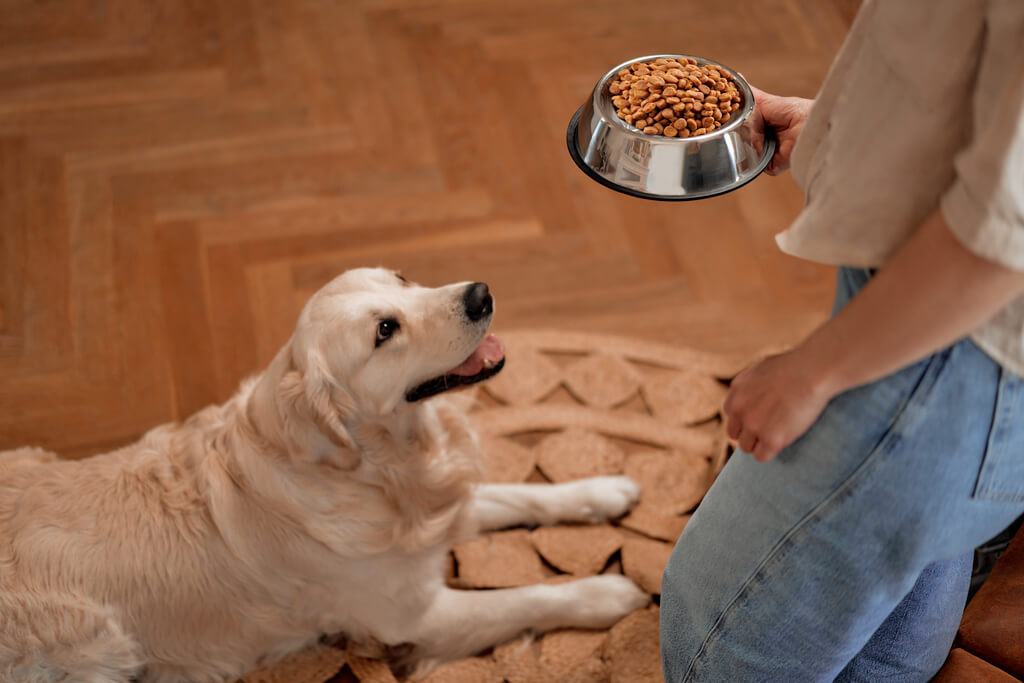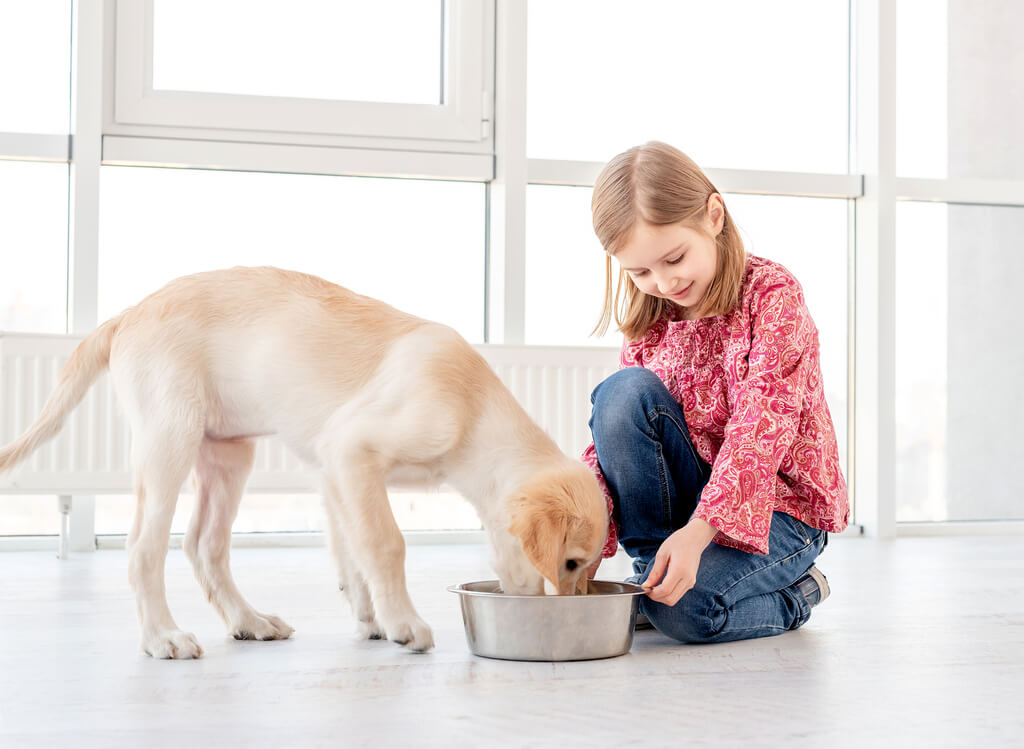
Nothing in the world of pet care is more important than making sure our canine companions get only the best food. Dogs benefit from a balanced diet that feeds their vitality, promotes their health, and increases their happiness, just like humans do.
A bowl of kibble is only the beginning of the road to understanding your dog’s ideal palate; there is also an exploration of flavors, nutrients, and dietary options that are tailored to your pet’s particular requirements.
In this article, you will come to know how to feed your dog by creating a delicious and wholesome mealtime for your canine friend
Crafting a Canine Culinary Symphony

Unveiling the Nutritional Essentials
Each dog is unique, and depending on characteristics like age, breed, and activity level, different dogs may have different nutritional needs And proper feeding schedules. Let’s first comprehend the fundamental elements that make up a well-rounded meal for dogs before we begin our culinary adventure.
1. A powerhouse of Proteins:
Canines require a diet high in protein, therefore it’s important to give them lean meats like chicken, turkey, steak, and fish. These proteins boost general immunity, fuel muscular growth, and repair tissues.
2. Carbohydrate Choices:
Carbs supply energy; whole grains like brown rice and oats are excellent sources. However, dogs also benefit from the fiber in vegetables like sweet potatoes and carrots.
3. Healthy Fats:
Omega-3 and Omega-6 fatty acids contribute to a glossy coat, healthy skin, and cognitive function. Salmon, flaxseed, and coconut oil are fantastic options.
4. Vitamins and Minerals:
Essential nutrients like vitamins A, D, E, and minerals like calcium and phosphorus are key players in your dog’s well-being.
Commercial Vs. Homemade Treats for Dogs

You have two options when it comes to treats: store-bought or handmade. Let’s compare the pros and cons of each choice.
Purchased Temptations
Commercial treats target specialized requirements, such as oral health or joint support, and offer convenience and diversity. To prevent artificial additives, excessive sugars, and poor-quality components, reading labels is crucial. Choose trusted brands, and ask your veterinarian for advice.
Delicious Homemade Treats
Making homemade food allows you complete control over the ingredients. You can experiment with recipes that call for dog-friendly ingredients like pumpkin, blueberries, and peanut butter. Always check the safety of each component for your unique breed, and keep in mind that moderation is vital.
Mealtime Magic: Designing Balanced Meals

Making balanced meals for your pet is like putting together a symphony of tastes and nutrients. Take into account these suggestions to create a pleasant dining experience.
Protein Priority:
Make protein the star of each meal. Incorporate high-quality animal proteins like chicken, turkey, or lean cuts of beef.
Veggies Galore:
Vegetables add a burst of vitamins and minerals. Create a medley with options like spinach, carrots, and peas, ensuring they’re cooked for easy digestion.
Grains with Caution:
Whole grains offer energy but should be portioned appropriately. Quinoa, brown rice, and oats are great choices.
Fruits for Fun:
Integrate fruits like apples, berries, and watermelon for a touch of natural sweetness. Remember to remove seeds and pits.
Portion Control:
Keep portion sizes in check to prevent overfeeding. Follow feeding guidelines based on your dog’s weight and consult your vet for personalized recommendations.
FAQs:
When carried out properly, both options can be secure. Although homemade diets give you more control over the components, a canine nutritionist or veterinarian must be consulted to guarantee nutritional balance.
Lean meats, plain yogurt, and carrots are just a few examples of human meals that are harmless and even helpful for dogs. However, a lot of things, like chocolate, grapes, and onions, are poisonous to dogs.
There are several causes of picky eating. Try out various textures and flavors, have a regular food schedule, and refrain from overindulging in goodies.
Because of the possibility of bacterial contamination, raw diets might be dangerous. Consult a veterinarian before deciding on a raw diet, and be sure to maintain good cleanliness and food safety.
A healthy diet should not be replaced by supplements. Before introducing supplements, speak with your veterinarian because excesses can result in imbalances.
Smooth transitions help avoid gastrointestinal distress. Over the course of a week or two, gradually increase the proportion by blending a tiny bit of the new food with the old.
Conclusion:
Every dish, from protein-rich meals to mouthwatering treats, supports the health and pleasure of your animal buddy. Accept this culinary challenge and adjust your strategy to suit your dog’s particular palette and preferences. By following our guide, you’ll learn how to feed your dog in a way that goes beyond basic sustenance, reflecting your unwavering love and care for your furry companion.
In case you missed it!











